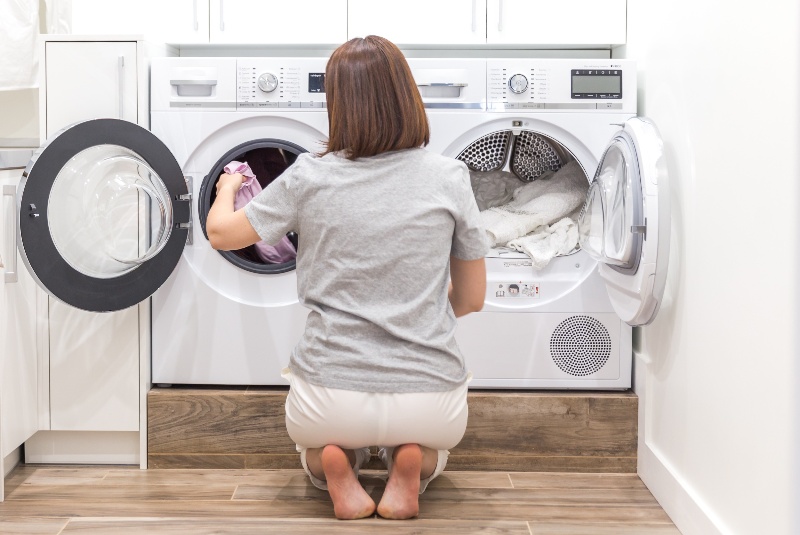A kitchen isn’t just a place for cooking—it’s often the heart of the home, a space where family and friends gather. Choosing the right paint for this high-traffic, high-moisture area can dramatically change its look and feel while also standing up to the unique challenges kitchens face. Unlike other rooms, kitchen walls and surfaces deal with grease splatters, steam, and frequent cleaning, making paint selection as much about durability and functionality as it is about color.
Consider the Kitchen’s Unique Environment
The kitchen is exposed to heat, humidity, and frequent contact with food and liquids. These factors can quickly wear down the wrong type of paint. Before selecting a color, it’s important to choose a formula that can handle:
-
Moisture resistance: Prevents peeling and bubbling in humid conditions.
-
Washability: Allows easy cleaning without damaging the finish.
-
Stain resistance: Keeps walls looking fresh despite spills or splatters.
Choose the Right Paint Finish
The finish you choose is as important as the color itself because it determines durability and ease of maintenance.
Satin Finish
-
Pros: Smooth and slightly glossy, making it easy to clean.
-
Best for: General kitchen walls where durability is key.
Semi-Gloss Finish
-
Pros: Highly washable, excellent for areas near stoves, sinks, and backsplashes.
-
Best for: Trim, cabinetry, and high-moisture areas.
Eggshell Finish
-
Pros: Soft sheen with better washability than flat paint.
-
Best for: Low-traffic kitchen walls away from cooking zones.
Tip: Avoid flat finishes in kitchens—they tend to absorb stains and are harder to clean.
Select Paint Designed for Kitchens and Bathrooms
Paints labeled specifically for kitchens and bathrooms have added properties to withstand humidity and resist mold and mildew. They also offer superior washability compared to standard interior paints. While they may cost a bit more, they’ll save you money in the long run by lasting longer and requiring fewer touch-ups.
Don’t Skimp on Quality
While budget paints might seem tempting, they often require more coats, fade faster, and lack the durability needed for kitchens. A high-quality paint provides:
-
Better coverage: Reduces the number of coats needed.
-
Longer lifespan: Holds up to cleaning and daily wear.
-
True color: Maintains vibrancy over time despite exposure to light and steam.
Choosing the Right Color Palette
The right color can make your kitchen feel larger, cozier, or more energetic.
Light Colors for Space and Freshness
-
Whites, creams, and pale grays reflect light, making the kitchen appear brighter and more open.
-
Ideal for smaller kitchens or spaces with limited natural light.
Bold Colors for Personality
-
Deep blues, forest greens, and even black can create a dramatic focal point.
-
Works best when paired with lighter cabinetry or counters to avoid a heavy look.
Warm Tones for Comfort
-
Yellows, soft oranges, and warm neutrals create a welcoming feel.
-
Great for family-oriented kitchens where coziness is a priority.
Test Before You Commit
Lighting in kitchens can vary dramatically from natural daylight to warm artificial lighting in the evening. A color that looks perfect in the store might look completely different at home.
-
Buy small paint samples: Apply swatches on different walls and observe them at various times of day.
ADVERTISEMENT -
Check next to fixtures: See how the color interacts with countertops, backsplashes, and appliances.
Coordinate with Existing Elements
Your paint color should complement, not clash with, your cabinets, countertops, flooring, and appliances.
-
Neutral cabinets: Allow for more freedom with bold wall colors.
-
Bold cabinetry: Stick to softer or neutral wall tones for balance.
-
Stainless steel appliances: Pair well with cool grays, blues, or crisp whites.
Consider Accent Walls and Two-Tone Designs
If you want a fresh look without overwhelming the space, try:
-
Accent walls: Paint one wall in a bold color for visual interest.
-
Two-tone schemes: Use a darker shade on the lower half of walls or cabinets and a lighter shade above.
-
Open shelving backgrounds: Paint the wall behind shelves in a contrasting color for a designer touch.
Eco-Friendly Paint Options
If you’re concerned about indoor air quality, look for low-VOC (volatile organic compound) or zero-VOC paints.
-
Benefits: Reduced odors, safer for children and pets, better for the environment.
-
Brands: Many major paint companies now offer eco-friendly options without compromising durability.
Proper Prep for Long-Lasting Results
Even the best paint won’t perform well without good surface preparation.
-
Clean surfaces thoroughly: Remove grease, dirt, and dust before painting.
-
Repair imperfections: Fill cracks or holes with spackle and sand smooth.
-
Prime when needed: Essential if changing from a dark to light color or painting over glossy surfaces.
When to Call a Professional
While painting a kitchen can be a DIY-friendly project, hiring a professional can be worth the investment if:
-
You have textured walls or ceilings.
-
There are hard-to-reach areas.
-
You want a flawless, streak-free finish.
Final Touches That Complete the Look
Once the paint is dry, small additions can make the kitchen feel completely refreshed:
-
Matching hardware: Coordinate cabinet handles with your paint choice.
-
Decor accents: Add rugs, curtains, or wall art that tie into your new color.
-
Lighting upgrades: Proper lighting will highlight the paint’s texture and tone.
Choosing the best paint for your kitchen involves more than picking a pretty color—it’s about balancing beauty with durability. By selecting the right finish, prioritizing quality, and considering your kitchen’s unique conditions, you can achieve a fresh, long-lasting look that stands up to the demands of everyday cooking and family life. With the right preparation and thoughtful color choice, your kitchen can become both a functional workspace and a stylish centerpiece of your home.




